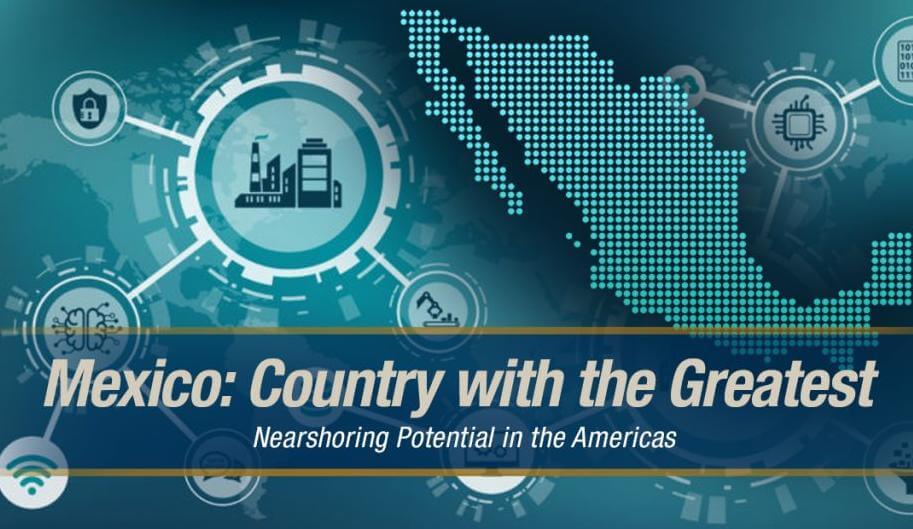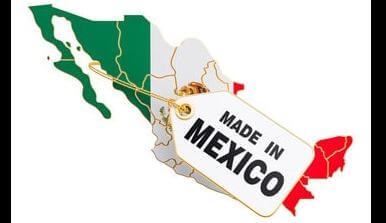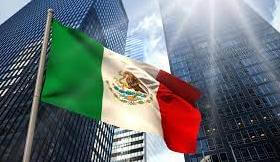Mexico, a commodity producer and manufacturing hub, is poised for post-pandemic growth, thanks to a rise in nearshoring opportunities, the growing sophistication of manufacturing, and an alignment with social and environmental considerations.
Trade and economic overview
Following a sharp contraction in 2020 and weak growth last year, Mexico’s economy is projected to expand by 3.3% in 2022 and 2.5% in 2023, according to the Organisation for Economic Cooperation and Development (OECD).
“With an increasing share of the population vaccinated and the improvement in the labour market, consumption will be a key growth driver. Exports will continue to benefit from deep integration into value chains,” reads an OECD Economic Outlook, published in December 2021, which notes that Mexico’s economy has broadened, with activity trending up in agriculture, industry and services.
Among Mexico’s strengths, as outlined by credit insurer Coface in a July 2021 economic study, include its geographic proximity to the US, free-floating exchange rate, substantial industrial base, and large population with a relatively low labour cost. This, Coface says, is offset by weaknesses including high income disparities and an oil sector that has been undermined by years of underinvestment.
As Mexico continues its recovery from the pandemic, some of the factors expected to cement the country’s status as a high-growth market include its membership of the recently signed US-Mexico-Canada Agreement (USMCA), its position as a top US trading partner, as well as opportunities for nearshoring as companies diversify their global supply chains.
“We expect trade in Mexico in 2022 to continue growing. Demand from the US remains strong and domestic demand is also on a recovery trend,” says Eduardo Allegre, Director & Business Head Trade Working Capital at Citibanamex.
US trade relations and nearshoring opportunities
Mexico’s geographic proximity to the US is a boon to its competitiveness. The Latin America nation accounted for 14.5% of total US trade last year as of November. Trade volumes between the two countries are expected to grow even further as the USMCA, which replaced the North American Free Trade Agreement (NAFTA), is fully implemented.
“Although it took some time to negotiate, Mexico was the first country to sign and ratify the USMCA deal. This can indicate that the Mexican government is serious about boosting exporting activity and that it acknowledges trade as one of the most important generators of foreign exchange,” says Allegre.
Amongst a range of measures, the USMCA strengthens environmental and working regulations and incentivises domestic vehicle production. Crucially, it also updates intellectual property (IP) legislation, which authorities hope will incentivise innovation and technical development in industry.
“The IP chapter could be a game changer for Mexico by strengthening its supply chains, increasing industrial productivity and facilitating innovation,” says Andre Carvalho, Head of Trade, Latin America, Treasury and Trade Solutions at Citi. “It establishes clear rules and creates long-term certainty, making Mexico more attractive to firms looking to invest in the country. This can be especially beneficial to US companies, who might need that certainty and protection around IP and trademarks for their nearshoring efforts.”
The country has long been a manufacturing hub, with prominent industries including automotive, aviation, medical devices, and electronics.
In 2019, Mexico was the sixth-largest country of origin for the US’ aerospace and defence imports, at US$3.2bn – well ahead of China, in 10th place, at US$1.3bn, according to a report from the Aerospace Industries Association.
It is this high-value manufacturing potential as well as Mexico’s proximity to the US market and relatively low labour costs that continues to encourage international organisations to set up in the country in the wake of ongoing US-China trade tensions and pandemic-related disruptions, which have forced firms to consider shortening their supply chains. nearshoremexicosourcing.com offers support to OEMs and Brand Owners looking to diversify their supply chain by transferring production from Asia to Mexico.
Sustainable development
President Andres Manuel Lopez Obrador has put social policies and programmes aimed at improving the lives of Mexicans at the core of plans to offset the economic fallout from the pandemic.
Over the years the country has also rolled out a series of environmental policies. It is a signatory of the Paris Agreement, was one of the first countries in the world to pass a specific law on climate change and is a “leading international actor on environmental policy in the region”, according to the Sustainable Governance Indicators.
“The government is really trying to push the social and environmental agenda, both in terms of its own spending efforts as well as the engagement of the wider business environment, which is helping to increase awareness of environmental, social and governance (ESG) issues,” says Carvalho.
In 2020, the Mexican Stock Exchange BMV and S&P introduced a new ESG index, designed to measure the performance of stocks that meet sustainability criteria, which Carvalho says was a “very strong message” to companies about the need to align themselves with best practices.
He further notes that ESG has become a “critical piece” in supply chain finance request for proposals in the country.
“Certain Mexican public companies, and more recently private firms too, have shown their commitment and alignment with ESG issues including social pressures, the scarcity of natural resources and the pressures of climate change,” says Allegre. “This has led financiers to start incorporating these factors into their lending and risk evaluation models. At Citibanamex we realised this opportunity and have been working with our partners to ensure we adopt ESG trends in our risk criteria.”
Much of the bank’s focus to date has been on the social element of ESG, particularly on securing access to financing and financial education for Mexico’s small and medium enterprises (SMEs), or pequeñas y medianas empresas (PyMES) in Spanish.
There are upwards of 4 million SMEs in Mexico, according to the OECD, which notes that in 2018 the average interest rate for large companies was approximately 11.8%, while for SMEs it was 17.7%.
“Although the government in recent years has developed various initiatives to support entrepreneurs and strengthen the access to finance for SMEs, their needs are still not being met.
What we have also discovered within the world of trade is that for many of the smaller suppliers, their financial acumen is often not particularly strong,” says Allegre.
In response, Citi has not only boosted access to supplier finance programmes but has also rolled out a financial education programme geared towards SMEs – the suppliers to the bank’s large corporate clients.
“We’ve found that these education programmes provide great value to suppliers by guiding them on how best to manage their finances. The financial inclusion aspect is very important to us and is an example of how the bank is joining in on driving the social agenda,” says Carvalho.
Financing needs
As Mexican companies position themselves in a post-pandemic world, they continue to prioritise working capital optimisation strategies – another area that the bank is keen to support. “CFOs are looking to supplier financing and receivables financing as ways to enhance the cash conversion cycle and optimise balance sheets, and there’s been a great deal of activity in the last few years,” says Allegre. “There really is a strong opportunity for Citi to support our clients in this regard and boost their trade activity so that they may take advantage of all the new prospects available to them in Mexico.”












